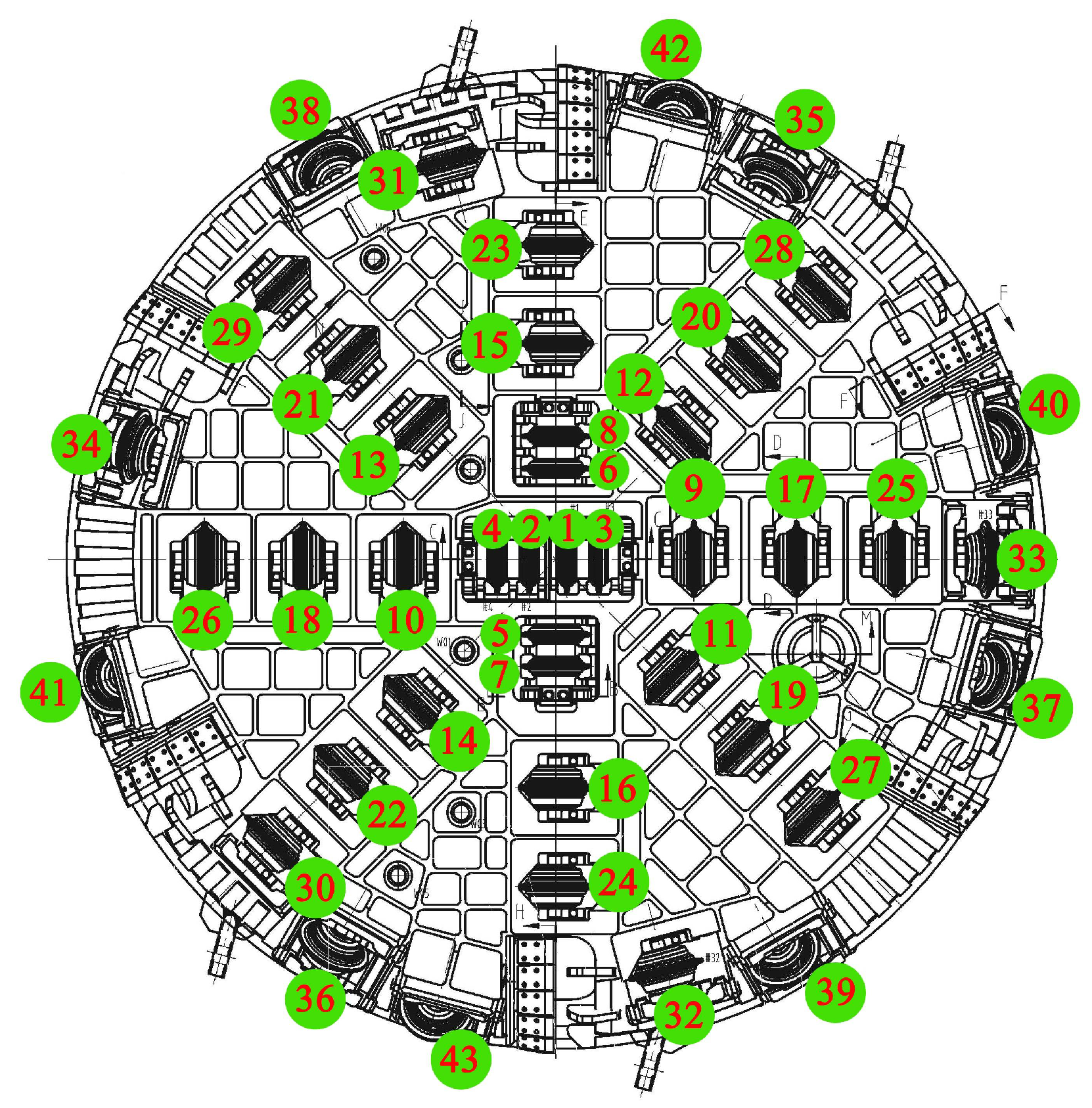Investigation on Vibration Influence Law of Double-Shield TBM Tunnel Construction
Abstract
:1. Introduction
2. Case Description
2.1. Project Overview
2.2. Introduction to Double-Shield TBM
3. Monitoring Program
3.1. Plan of Vibration Monitoring
3.2. Installation of Vibration Sensors
4. Analysis of Vibration Monitoring Results of Double-Shield TBM Construction
4.1. Time-Domain Analysis of Vibration Monitoring Results
4.2. Frequency Analysis of Vibration Monitoring Results
5. Research on Vibration Influence Range of Double-Shield TBM Construction
5.1. The Transverse Vibration Trend of Double-Shield TBM Construction
5.2. The Longitudinal Vibration Trend of Double-Shield TBM Construction
5.3. Vibration Influence Range of Double-Shield TBM Construction
6. Conclusions
- (1)
- The vibration caused by double-shield TBM construction mainly occurs in the excavation stage. The time-domain curves of the vibration acceleration can be divided into three stages: rising stage, stable stage, and falling stage; the peak acceleration mainly occurs in the stable stage.
- (2)
- The vibration frequencies in the X, Y, and Z-directions at the same depth are relatively close. The main vibration frequency of the plain fill is 20–30 Hz, and the medium and coarse sand is 40–50 Hz.
- (3)
- In terms of transverse vibration trend, the maximum peak acceleration is located above the tunnel excavation section, and the farther the measuring point is from the tunnel axis, the smaller the peak acceleration. For longitudinal vibration trend, the peak acceleration is largest when the cutter-head reaches the monitoring section. Moreover, as the distance decreases, the peak acceleration gradually increases after the cutter-head reaches 35 m in front of the monitoring section. After passing through the monitoring section, the peak acceleration drops sharply.
- (4)
- For human comfort in an operating room, the vibration influence range by double-shield TBM construction is 38 m in front of the cutter-head, 10 m behind the cutter-head, and 17 m on both sides of the tunnel’s axis. In terms of residential houses and office buildings, the vibration influence range is 29 m in front of the cutter-head, 8 m behind the cutter-head, and 10 m on both sides of the tunnel’s axis. Moreover, it has no effect on human comfort in shopping malls, cinemas, restaurants, etc.
Author Contributions
Funding
Institutional Review Board Statement
Informed Consent Statement
Data Availability Statement
Acknowledgments
Conflicts of Interest
References
- Li, X.G.; Yuan, D.J. Development of the safety control framework for shield tunneling in close proximity to the operational subway tunnels: Case studies in mainland China. Springerplus 2016, 5, 527. [Google Scholar] [CrossRef] [PubMed] [Green Version]
- Gong, Q.M.; Yin, L.J.; Ma, H.S.; Zhao, J. TBM tunnelling under adverse geological conditions: An overview. Tunn. Undergr. Space Technol. 2016, 57, 4–17. [Google Scholar] [CrossRef]
- Li, S.C.; Nie, L.C.; Liu, B. The Practice of Forward Prospecting of Adverse Geology Applied to Hard Rock TBM Tunnel Construction: The Case of the Songhua River Water Conveyance Project in the Middle of Jilin Province. Engineering 2018, 4, 131–137. [Google Scholar] [CrossRef]
- Liu, Q.S.; Huang, X.; Gong, Q.M.; Du, L.J.; Pan, Y.C.; Liu, J.P. Application and development of hard rock TBM and its prospect in China. Tunn. Undergr. Space Technol. 2016, 57, 33–46. [Google Scholar] [CrossRef]
- Lu, Z.L.; Wang, X.C.; Teng, H.W.; Guan, X.M.; Song, C.; Fan, G. Rock-Breaking Laws of Disc Cutters with Different Height Differences in Hard Rock Strata. Adv. Civ. Eng. 2022, 2022, 1–11. [Google Scholar] [CrossRef]
- Leng, S.; Lin, J.R.; Hu, Z.Z.; Shen, X.S. A Hybrid Data Mining Method for Tunnel Engineering Based on Real-Time Monitoring Data From Tunnel Boring Machines. IEEE Access 2020, 8, 90430–90449. [Google Scholar] [CrossRef]
- Liu, M.B.; Liao, S.M.; Men, Y.Q.; Xing, H.; Liu, H.; Sun, L.Y. Field Monitoring of TBM Vibration During Excavating Changing Stratum: Patterns and Ground Identification. Rock Mech. Rock Eng. 2022, 55, 1481–1498. [Google Scholar] [CrossRef]
- Vogiatzis, K.; Zafiropoulou, V.; Mouzakis, H. Monitoring and assessing the effects from Metro networks construction on the urban acoustic environment: The Athens Metro Line 3 Extension. Sci. Total Environ. 2018, 639, 1360–1380. [Google Scholar] [CrossRef]
- Yang, J.H.; Cai, J.Y.; Yao, C.; Li, P.; Jiang, Q.H.; Zhou, C.B. Comparative Study of Tunnel Blast-Induced Vibration on Tunnel Surfaces and Inside Surrounding Rock. Rock Mech. Rock Eng. 2019, 52, 4747–4761. [Google Scholar] [CrossRef]
- Ruiz, J.F.; Soares, P.J.; Costa, P.A.; Connolly, D.P. The effect of tunnel construction on future underground railway vibrations. Soil Dyn. Earthq. Eng. 2019, 125, 105756. [Google Scholar] [CrossRef]
- He, R.; Jiang, N.; Li, D.W.; Qi, J.F. Dynamic Response Characteristic of Building Structure under Blasting Vibration of underneath Tunnel. Shock Vib. 2022, 2022, 1–13. [Google Scholar] [CrossRef]
- Namli, M.; Aras, F. Investigation of effects of dynamic loads in metro tunnels during construction and operation on existing buildings. Arab. J. Geosci. 2020, 13, 1–11. [Google Scholar] [CrossRef]
- Xia, Y.Q.; Jiang, N.; Zhou, C.B.; Luo, X.D. Safety assessment of upper water pipeline under the blasting vibration induced by Subway tunnel excavation. Eng. Fail. Anal. 2019, 104, 626–642. [Google Scholar] [CrossRef]
- Yang, Y.M.; Cai, Z.W.; Jiang, N.; Zhou, C.B.; Li, H.B. Safety Evaluation of Underground Gas Pipe under Blasting of Subway Connected Aisle: A Case Study. Ksce J. Civ. Eng. 2022, 26, 921–932. [Google Scholar] [CrossRef]
- Liu, X.; Jiang, A.N.; Guo, X.P.; Hai, L. Effect of Excavation Blasting in the Arch Cover Method on Adjacent Existing Pipelines in a Subway Station. Appl. Sci. 2022, 12, 1529. [Google Scholar] [CrossRef]
- Yu, J.X.; Zhou, Z.B.; Zhang, X.; Yang, X.L.; Wang, J.X.; Zhou, L.H. Vibration Response Characteristics of Adjacent Tunnels under Different Blasting Schemes. Shock Vib. 2021, 2021, 5121296. [Google Scholar] [CrossRef]
- Vinh, P.V.; Tounsi, A. Free vibration analysis of functionally graded doubly curved nanoshells using nonlocal first-order shear deformation theory with variable nonlocal parameters. Thin-Walled Struct. 2022, 174, 109084. [Google Scholar] [CrossRef]
- Melaibari, A.; Daikh, A.A.; Basha, M.; Abdalla, A.W.; Othman, R.; Almitani, K.H.; Hamed, M.A.; Abdelrahman, A.; Eltaher, M.A. Free Vibration of FG-CNTRCs Nano-Plates/Shells with Temperature-Dependent Properties. Mathematics 2022, 10, 583. [Google Scholar] [CrossRef]
- Noori, A.R.; Aslan, T.A.; Temel, B. Dynamic Analysis of Functionally Graded Porous Beams Using Complementary Functions Method in the Laplace Domain. Compos. Struct. 2021, 256, 113094. [Google Scholar] [CrossRef]
- Yao, Z.G.; Tian, Q.F.; Fang, Y.; Ye, L.B.; Pu, S.; Fang, X.F. Propagation and Attenuation of Blast Vibration Waves in Closely Spaced Tunnels: A Case Study. Arab. J. Sci. Eng. 2022, 47, 4239–4252. [Google Scholar] [CrossRef]
- Tian, X.X.; Song, Z.P.; Wang, J.B. Study on the propagation law of tunnel blasting vibration in stratum and blasting vibration reduction technology. Soil Dyn. Earthq. Eng. 2019, 126, 105813. [Google Scholar] [CrossRef]
- Yin, T.; Zhou, C.B.; Zheng, C.Q.; Fu, J.G.; Guo, Z.R. The Vibration Characteristics of Ground of Rock Blasting in Silt-Rock Strata. Shock Vib. 2021, 2021, 3318965. [Google Scholar] [CrossRef]
- Wang, X.; Li, J.C.; Zhao, X.B.; Liang, Y. Propagation characteristics and prediction of blast-induced vibration on closely spaced rock tunnels. Tunn. Undergr. Space Technol. 2022, 123, 104416. [Google Scholar] [CrossRef]
- Kong, S.M.; Kim, A.R.; Byun, Y.; Shim, S.; Choi, S.I.; Lee, S.W. Analysis of Stability and Required Offset with Vibration Velocity Considering Conditions of Bedrock and Explosive Charges Using the TBM and NATM Extension Blasting Method. Appl. Sci. 2022, 12, 3473. [Google Scholar] [CrossRef]
- Wu, F.; Gong, Q.M.; Li, Z.G.; Qiu, H.F.; Jin, C.; Huang, L.; Yin, L.J. Development and application of cutterhead vibration monitoring system for TBM tunnelling. Int. J. Rock Mech. Min. Sci. 2021, 146, 104887. [Google Scholar] [CrossRef]
- Wu, K.; Zheng, Y.; Li, S.C.; Sun, J.; Han, Y.C.; Hao, D.X. Vibration response law of existing buildings affected by subway tunnel boring machine excavation. Tunn. Undergr. Space Technol. 2022, 120, 104318. [Google Scholar] [CrossRef]
- Qingdao Geology and Mineral Geotechnical Engineering Co., Ltd. Geotechnical Investigation Report between Laoshan Science and Technology City Station and Zhangcun Station; Qingdao Geology and Mineral Geotechnical Engineering Co., Ltd.: Qingdao, China, 2016. [Google Scholar]
- GBT 50218-2014; Standard for Engineering Classification of Rock Mass. China Planning Press: Beijing, China, 2014; pp. 1–25. (In Chinese)
- Qingdao Metro Line 4 Civil Engineering Zone 10 Project Manager Department. Special Plan for TBM Construction in Civil Engineering Zone 10 of Qingdao Metro Line 4; Qingdao Metro Line 4 Civil Engineering Zone 10 Project Manager Department: Qingdao, China, 2018. [Google Scholar]
- Elbaz, K.; Shen, S.L.; Zhou, A.N.; Yin, Z.Y.; Lyu, H.M. Prediction of Disc Cutter Life During Shield Tunneling with AI via the Incorporation of a Genetic Algorithm into a GMDH-Type Neural Network. Engineering 2021, 7, 238–251. [Google Scholar] [CrossRef]
- China Railway Construction Heavy Industry Co., Ltd. ZTT6300 Double-Shield TBM Technical Parameter Report for Civil Engineering Zone 10 of Qingdao Metro Line 4; China Railway Construction Heavy Industry Co., Ltd.: Changsha, China, 2018. [Google Scholar]
- Paliwal, D.; Choudhury, A.; Govardhan, T. Detection of Bearing Defects from Noisy Vibration Signals Using a Coupled Method of Wavelet Analysis followed by FFT Analysis. J. Vib. Eng. Technol. 2017, 5, 21–34. [Google Scholar]
- Shirmohammadi, F.; Bahrami, S.; Saadatpour, M.M.; Esmaeily, A. Modeling wave propagation in moderately thick rectangular plates using the spectral element method. Appl. Math. Model. 2015, 39, 3481–3495. [Google Scholar] [CrossRef]
- JGJ/T 441-2019; Technical Standard for Human Comfort of the Floor Vibration. China Construction Industry Press: Beijing, China, 2019; pp. 1–40. (In Chinese)
- Fouladgar, N.; Hasanipanah, M.; Amnieh, H.B. Application of cuckoo search algorithm to estimate peak particle velocity in mine blasting. Eng. Comput. 2017, 33, 181–189. [Google Scholar] [CrossRef]
- Yan, W.M.; Yuen, K.V. On the Proper Estimation of the Confidence Interval for the Design Formula of Blast-Induced Vibrations with Site Records. Rock Mech. Rock Eng. 2015, 48, 361–374. [Google Scholar] [CrossRef]
- Zhang, X.Q.; Sarris, C.D. Error Analysis and Comparative Study of Numerical Methods for the Parabolic Equation Applied to Tunnel Propagation Modeling. IEEE Trans. Antennas Propag. 2015, 63, 3025–3034. [Google Scholar] [CrossRef]
- Dobaczewski, J.; Nazarewicz, W.; Reinhard, P.G. Error estimates of theoretical models: A guide. J. Phys. G-Nucl. Part. Phys. 2014, 41, 047001. [Google Scholar] [CrossRef]
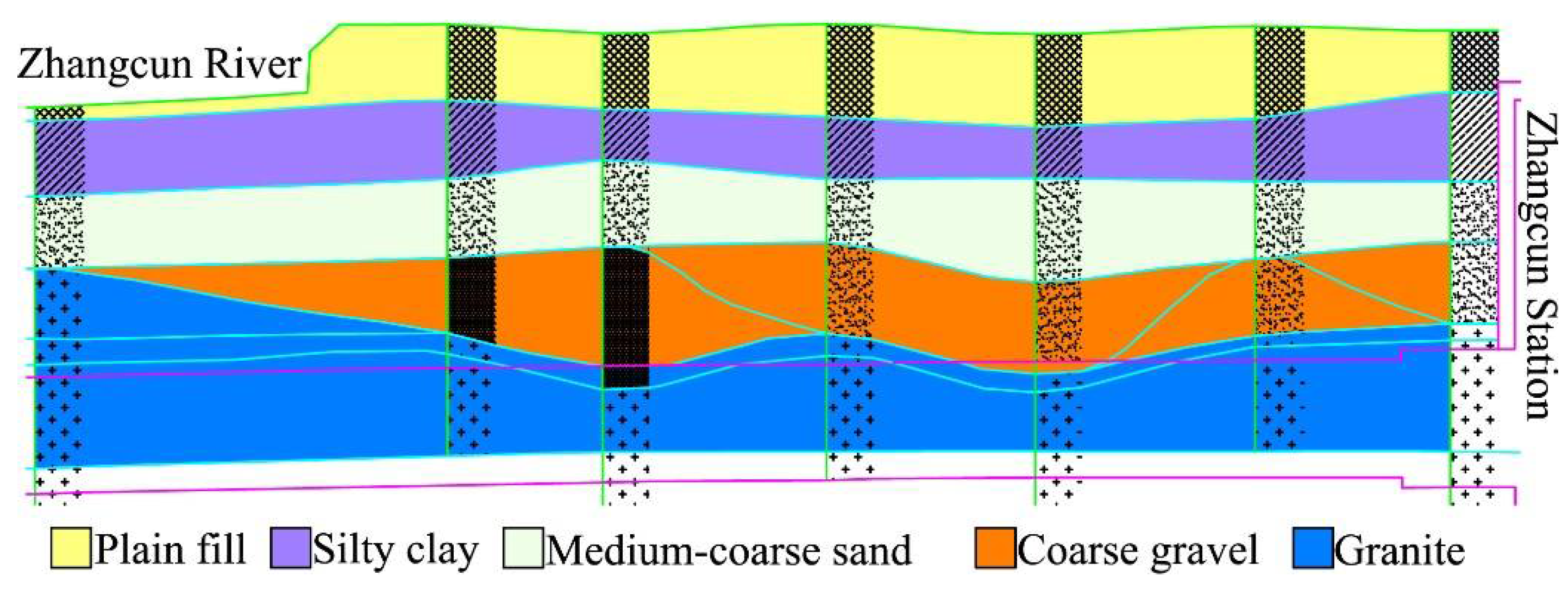
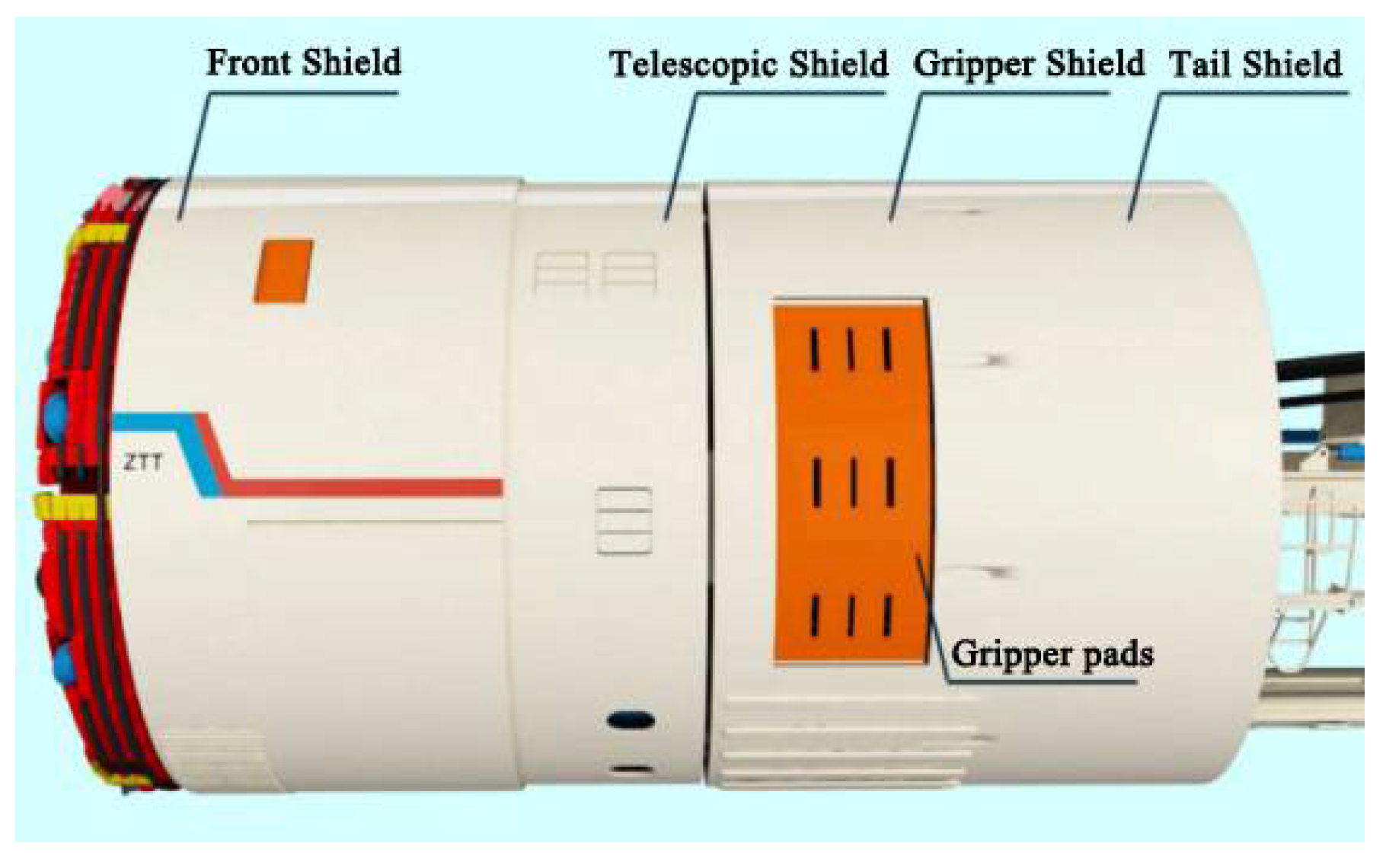
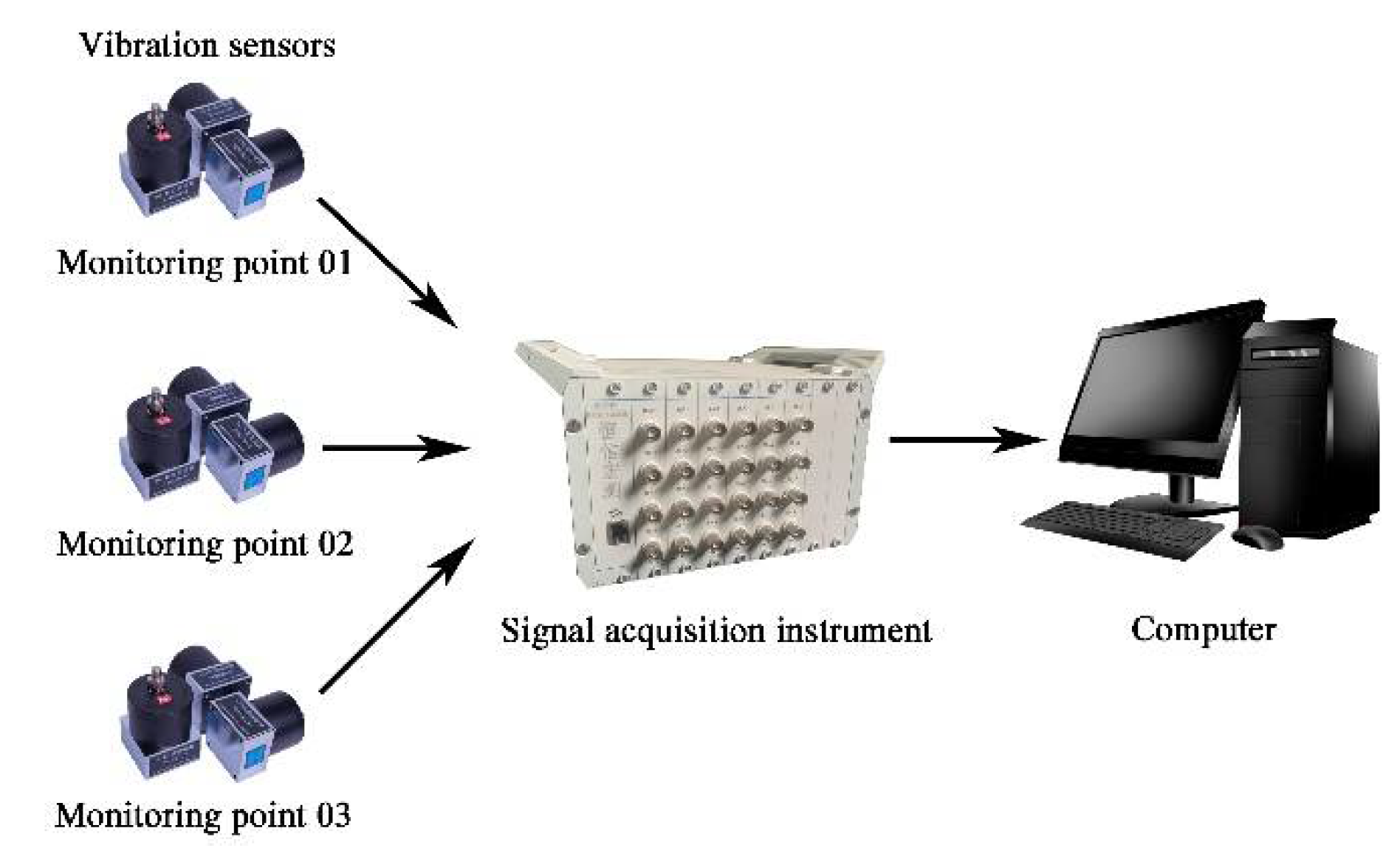
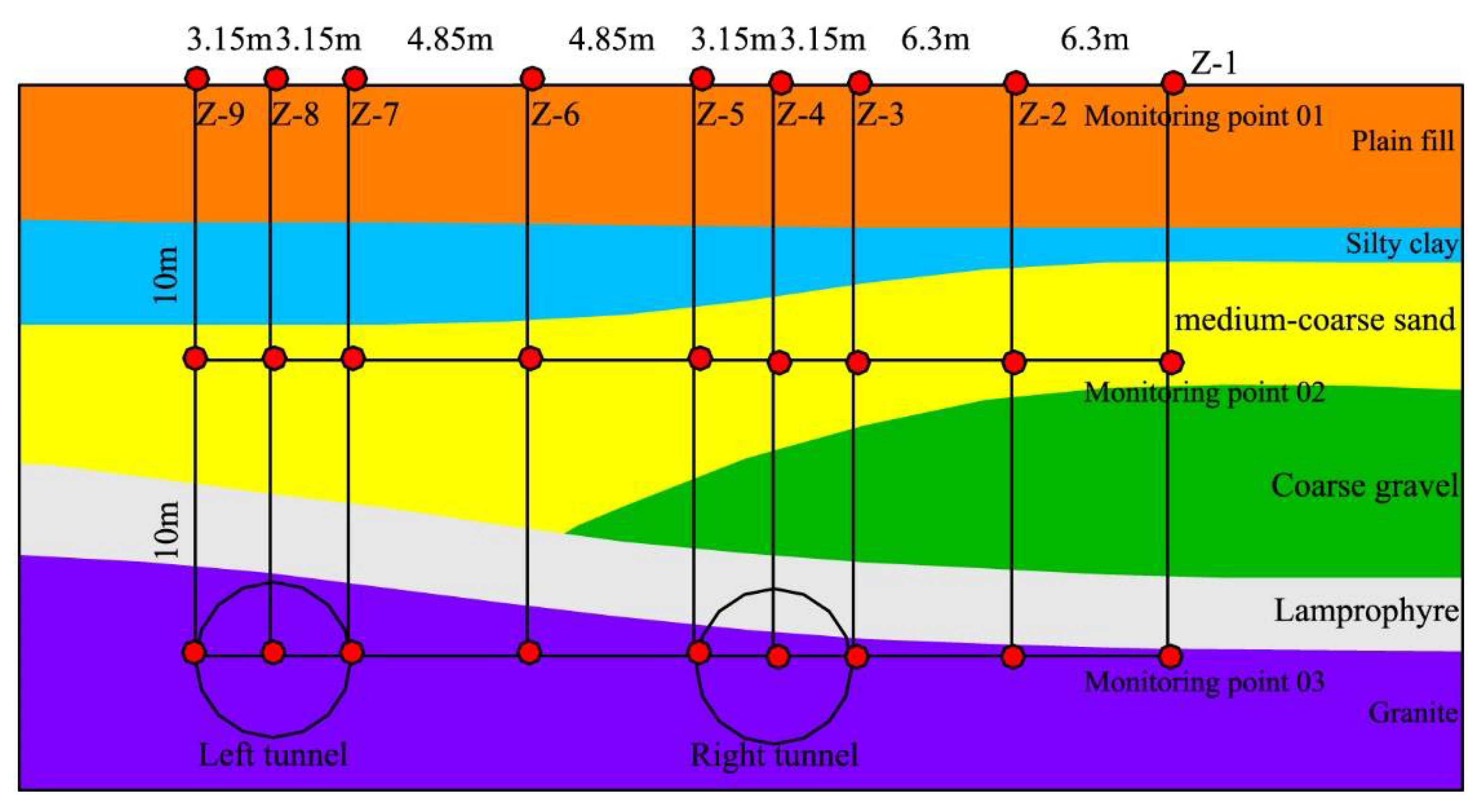
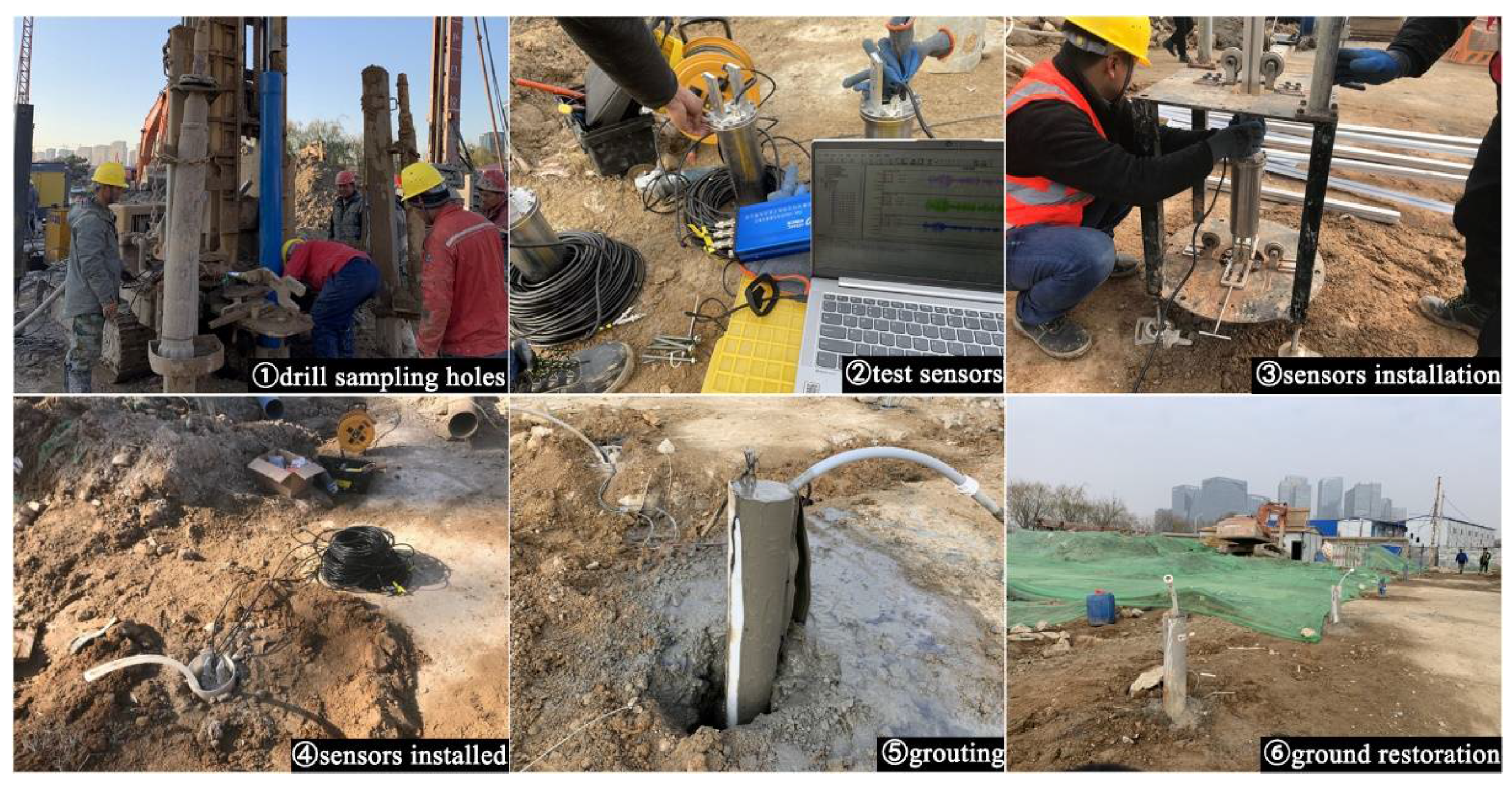
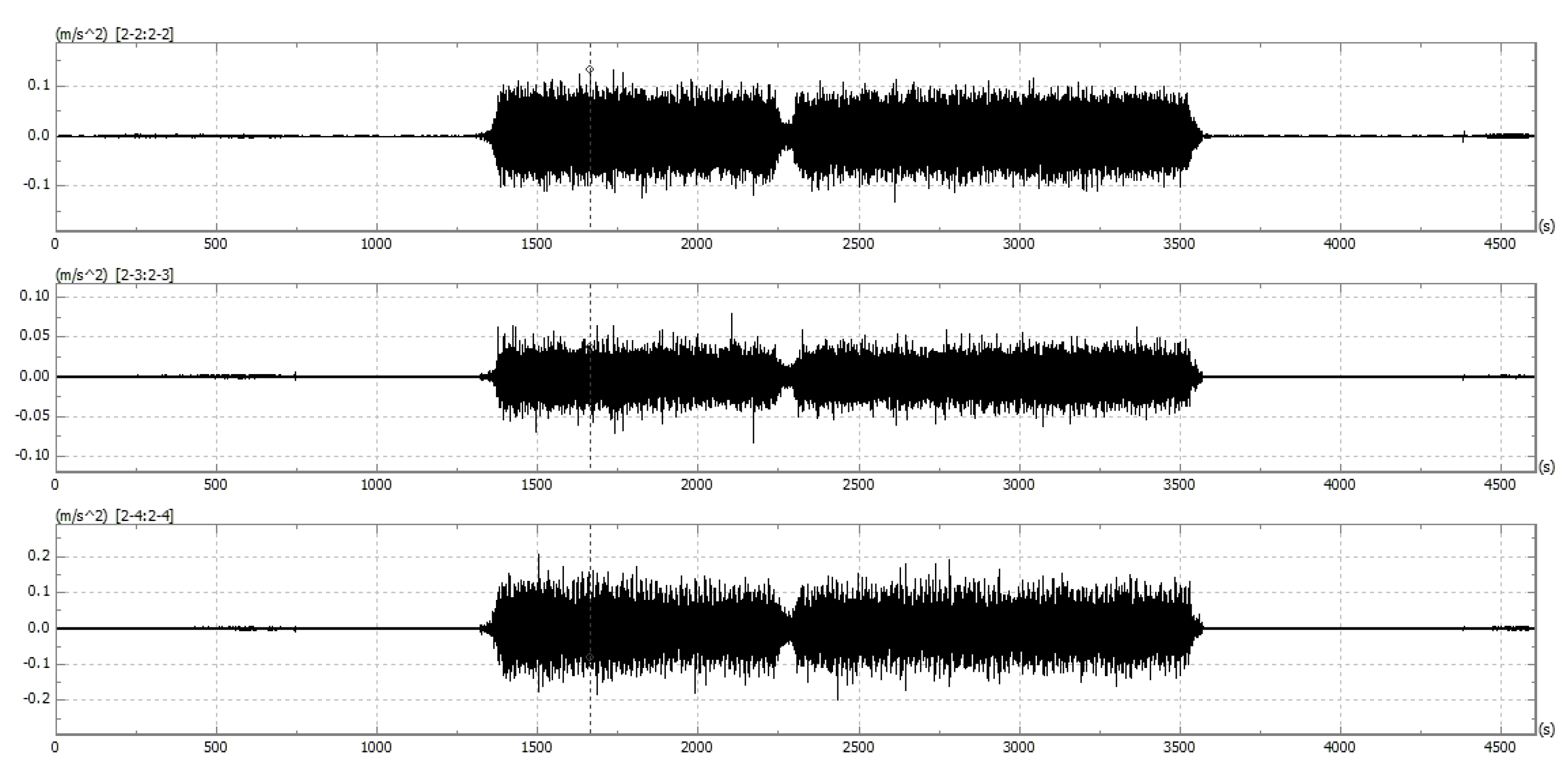
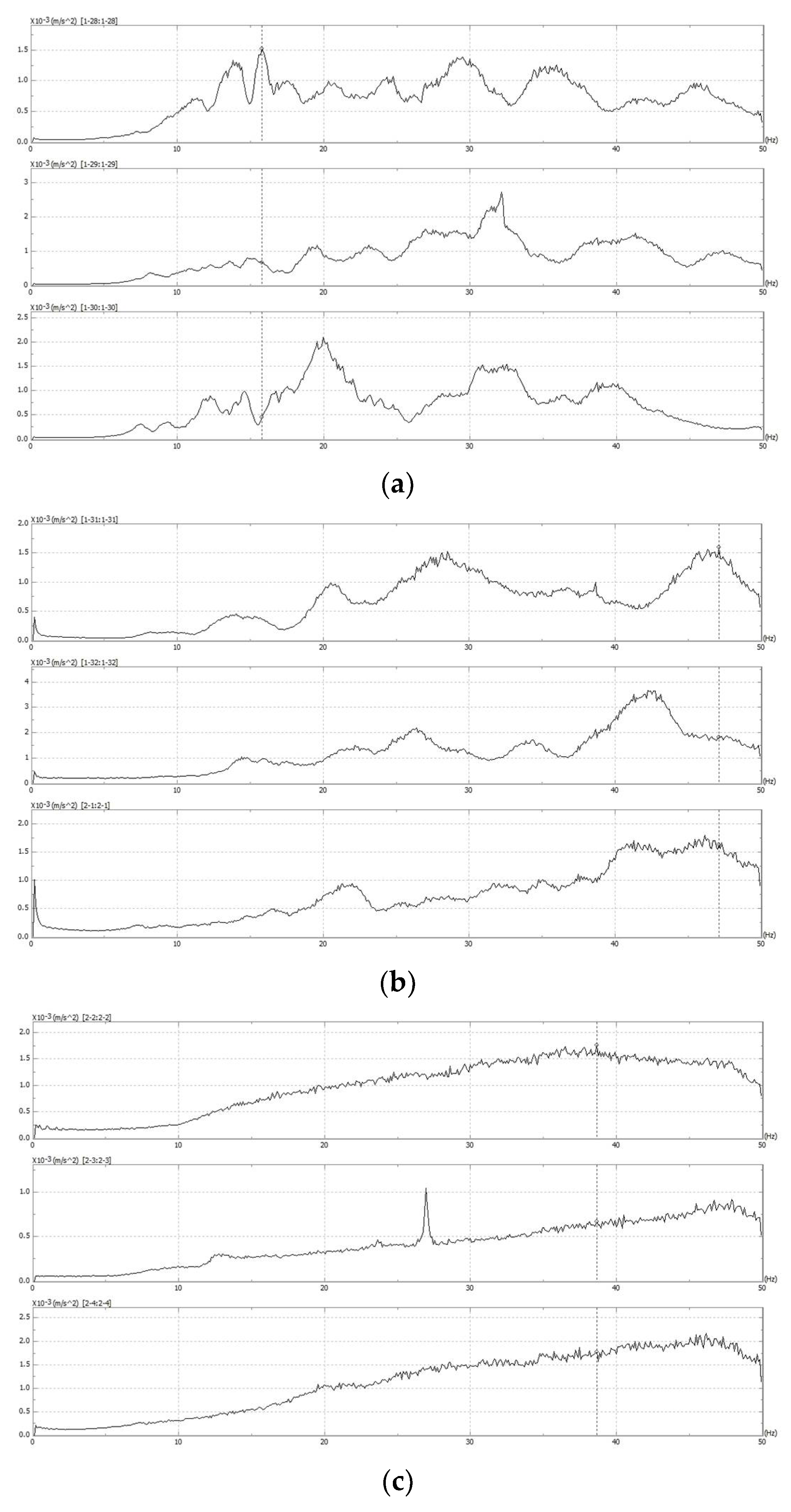
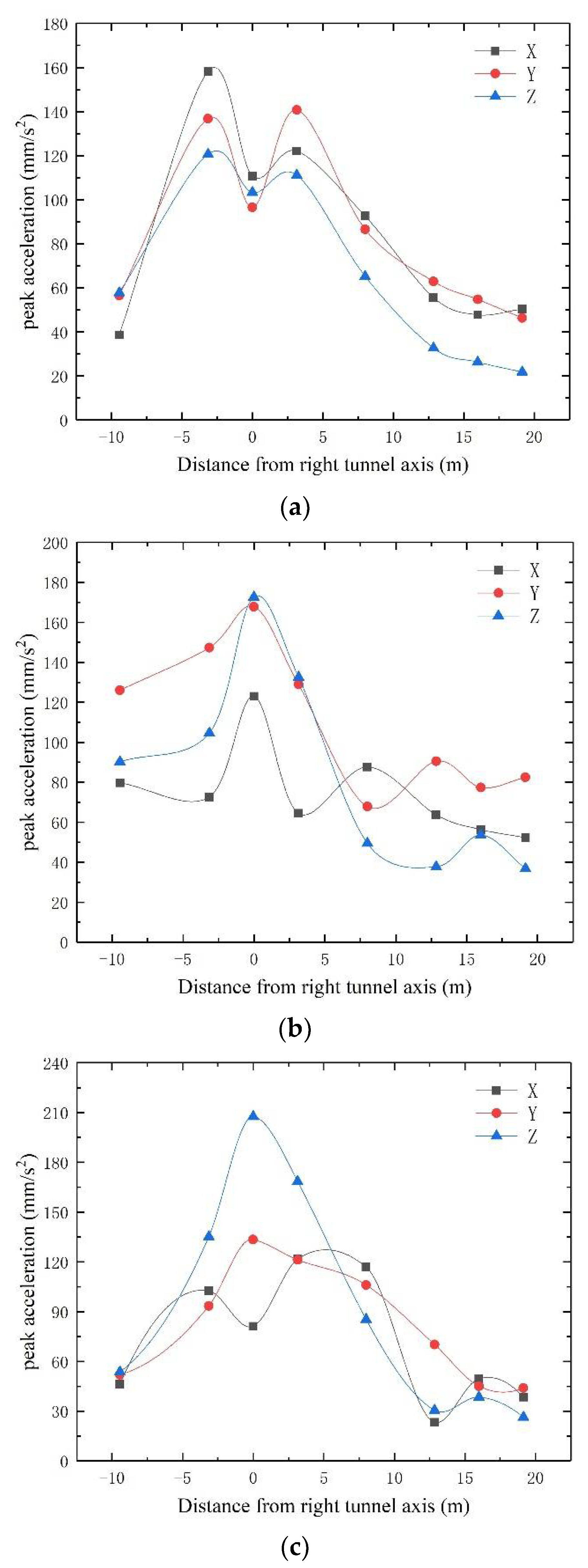
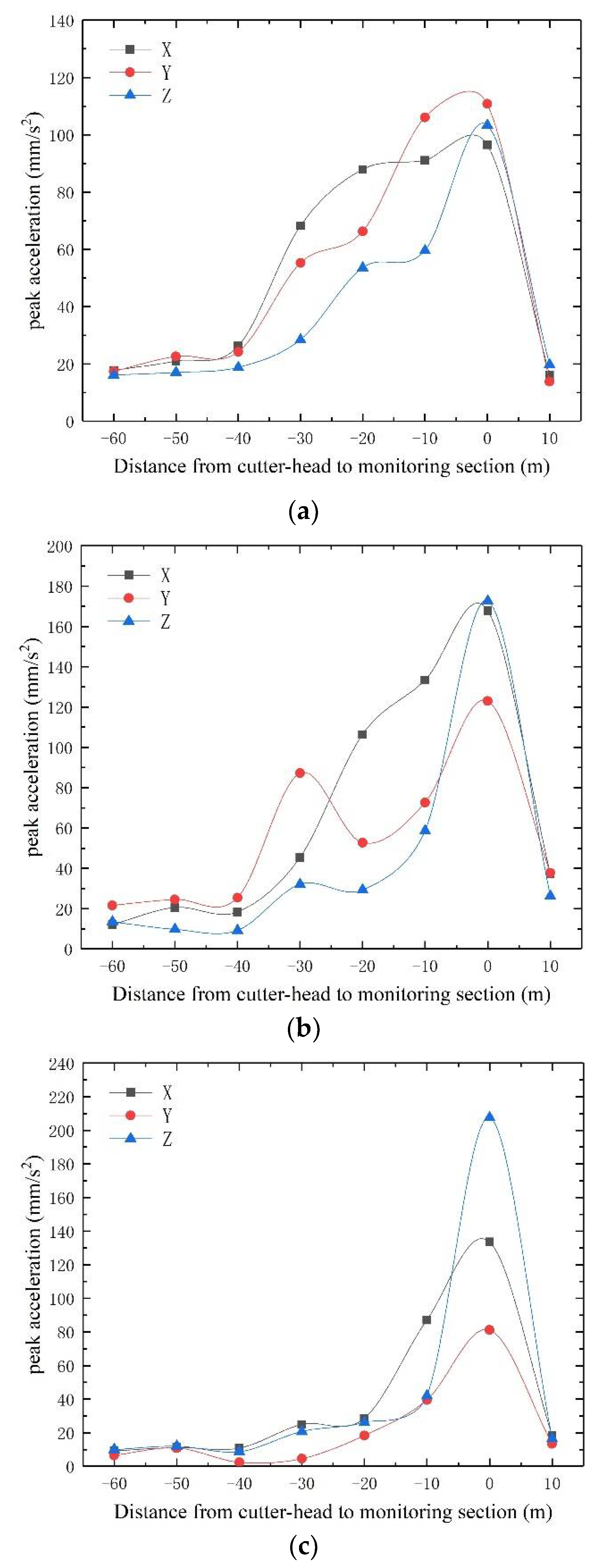
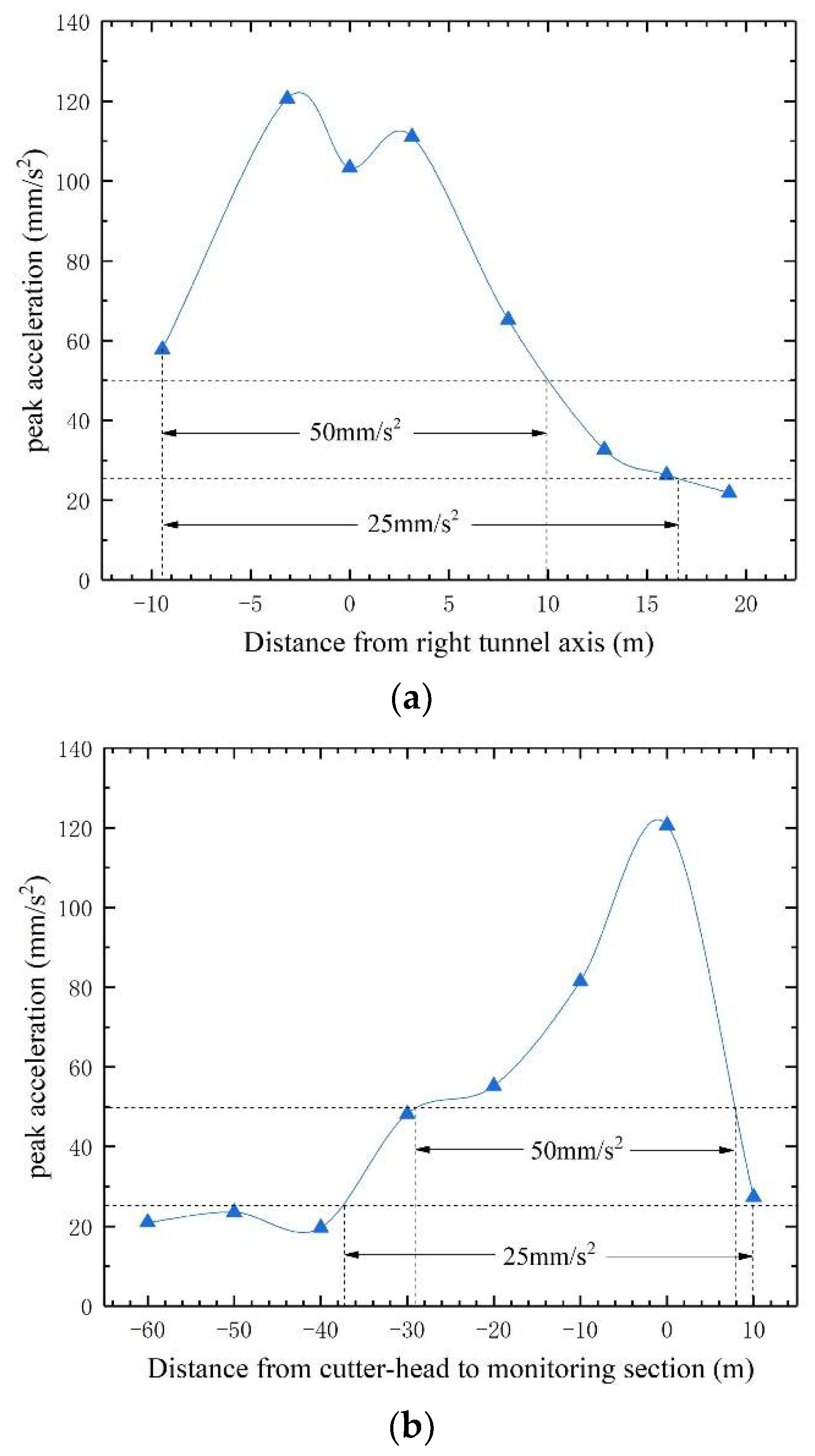
| Physical Quantities | Sensitivity (V/m/s2) | Measurement Range (m/s2) | Pass Band (Hz) | Output Load Resistance (kΩ) | Resolution Ratio (m/s2) | Size (mm) |
|---|---|---|---|---|---|---|
| acceleration | 0.3 | 0~20 | 0.2~80 | 1000 | 5 × 10−6 | 56 × 56 × 77 |
| Sampling Holes | Monitoring Points | Signal Channels | Sampling Holes | Monitoring Points | Signal Channels | ||||
|---|---|---|---|---|---|---|---|---|---|
| X | Y | Z | X | Y | Z | ||||
| Z-2 | 01 | 1-10 | 1-11 | 1-12 | Z-6 | 01 | 2-14 | 2-15 | 2-16 |
| 02 | 1-13 | 1-14 | 1-15 | 02 | 2-17 | 2-18 | 2-19 | ||
| 03 | 1-16 | 1-17 | 1-18 | 03 | 2-20 | 2-21 | 2-22 | ||
| Z-3 | 01 | 1-19 | 1-20 | 1-21 | Z-7 | 01 | 2-23 | 2-24 | 2-25 |
| 02 | 1-22 | 1-23 | 1-24 | 02 | 2-26 | 2-27 | 2-28 | ||
| 03 | 1-25 | 1-26 | 1-27 | 03 | 2-29 | 2-30 | 2-31 | ||
| Z-4 | 01 | 1-28 | 1-29 | 1-30 | Z-8 | 01 | 2-32 | 3-1 | 3-2 |
| 02 | 1-31 | 1-32 | 2-1 | 02 | 3-3 | 3-4 | 3-5 | ||
| 03 | 2-2 | 2-3 | 2-4 | 03 | 3-6 | 3-7 | 3-8 | ||
| Z-5 | 01 | 2-5 | 2-6 | 2-7 | Z-9 | 01 | 3-9 | 3-10 | 3-11 |
| 02 | 2-8 | 2-9 | 2-10 | 02 | 3-12 | 3-13 | 3-14 | ||
| 03 | 2-11 | 2-12 | 2-13 | 03 | 3-15 | 3-16 | 3-17 | ||
| Sampling Holes | Monitoring Points | Peak Accelerations | Sampling Holes | Monitoring Points | Peak Accelerations | ||||
|---|---|---|---|---|---|---|---|---|---|
| X | Y | Z | X | Y | Z | ||||
| Z-2 | 01 | 56.55 | 38.68 | 57.80 | Z-6 | 01 | 86.59 | 92.59 | 65.23 |
| 02 | 126.01 | 79.71 | 90.26 | 02 | 67.87 | 87.60 | 49.44 | ||
| 03 | 51.98 | 46.26 | 53.62 | 03 | 106.1 | 116.91 | 85.30 | ||
| Z-3 | 01 | 136.79 | 158.19 | 120.62 | Z-7 | 01 | 62.91 | 55.63 | 32.70 |
| 02 | 147.36 | 72.62 | 104.57 | 02 | 90.52 | 63.65 | 37.69 | ||
| 03 | 93.45 | 102.53 | 135.21 | 03 | 70.25 | 23.30 | 30.63 | ||
| Z-4 | 01 | 96.51 | 110.79 | 103.30 | Z-8 | 01 | 54.74 | 47.80 | 36.32 |
| 02 | 167.8 | 122.97 | 172.68 | 02 | 77.35 | 56.33 | 53.60 | ||
| 03 | 133.54 | 81.16 | 207.60 | 03 | 45.07 | 49.59 | 38.42 | ||
| Z-5 | 01 | 140.75 | 122.02 | 111.12 | Z-9 | 01 | 46.33 | 50.38 | 46.81 |
| 02 | 128.97 | 64.41 | 132.59 | 02 | 82.44 | 52.27 | 36.83 | ||
| 03 | 121.19 | 121.61 | 168.50 | 03 | 43.92 | 38.52 | 26.32 | ||
| Buried Depth | Direction | Distance between Cutter-Head and Monitoring Section | |||||||
|---|---|---|---|---|---|---|---|---|---|
| −60 m | −50 m | −40 m | −30 m | −20 m | −10 m | 0 m | 10 m | ||
| 0 m | X | 17.74 | 20.98 | 26.21 | 68.22 | 87.92 | 91.07 | 96.51 | 16.08 |
| Y | 17.38 | 22.66 | 24.20 | 55.25 | 66.33 | 106.08 | 110.79 | 13.85 | |
| Z | 16.14 | 17.05 | 18.81 | 28.50 | 53.59 | 59.62 | 103.30 | 19.76 | |
| 10 m | X | 12.03 | 20.52 | 18.40 | 45.42 | 106.33 | 133.34 | 167.80 | 37.29 |
| Y | 21.62 | 24.55 | 25.46 | 87.22 | 52.69 | 72.69 | 122.97 | 37.81 | |
| Z | 13.46 | 9.71 | 9.24 | 32.08 | 29.34 | 58.71 | 172.68 | 26.29 | |
| 20 m | X | 9.19 | 11.17 | 10.77 | 24.92 | 28.61 | 87.16 | 133.54 | 18.40 |
| Y | 6.50 | 10.88 | 2.38 | 4.52 | 18.32 | 39.52 | 81.16 | 13.40 | |
| Z | 9.91 | 11.98 | 8.72 | 20.68 | 26.16 | 42.04 | 207.60 | 16.48 | |
| Building Type | Influence Range in Front of Cutter-Head (m) | Influence Range behind the Cutter-Head (m) | Influence Range on Both Sides of Tunnel Axis (m) |
|---|---|---|---|
| Operating rooms | 38 | 10 | 17 |
| Residential houses, office buildings, classrooms, hotels, etc. | 29 | 8 | 10 |
| Shopping malls, cinemas, restaurants, etc. | No effect | No effect | No effect |
Publisher’s Note: MDPI stays neutral with regard to jurisdictional claims in published maps and institutional affiliations. |
© 2022 by the authors. Licensee MDPI, Basel, Switzerland. This article is an open access article distributed under the terms and conditions of the Creative Commons Attribution (CC BY) license (https://creativecommons.org/licenses/by/4.0/).
Share and Cite
Lu, Z.; Wang, X.; Zhou, G.; Feng, L.; Jiang, Y. Investigation on Vibration Influence Law of Double-Shield TBM Tunnel Construction. Appl. Sci. 2022, 12, 7727. https://doi.org/10.3390/app12157727
Lu Z, Wang X, Zhou G, Feng L, Jiang Y. Investigation on Vibration Influence Law of Double-Shield TBM Tunnel Construction. Applied Sciences. 2022; 12(15):7727. https://doi.org/10.3390/app12157727
Chicago/Turabian StyleLu, Zelin, Xuchun Wang, Guanghong Zhou, Lei Feng, and Yusheng Jiang. 2022. "Investigation on Vibration Influence Law of Double-Shield TBM Tunnel Construction" Applied Sciences 12, no. 15: 7727. https://doi.org/10.3390/app12157727
APA StyleLu, Z., Wang, X., Zhou, G., Feng, L., & Jiang, Y. (2022). Investigation on Vibration Influence Law of Double-Shield TBM Tunnel Construction. Applied Sciences, 12(15), 7727. https://doi.org/10.3390/app12157727







